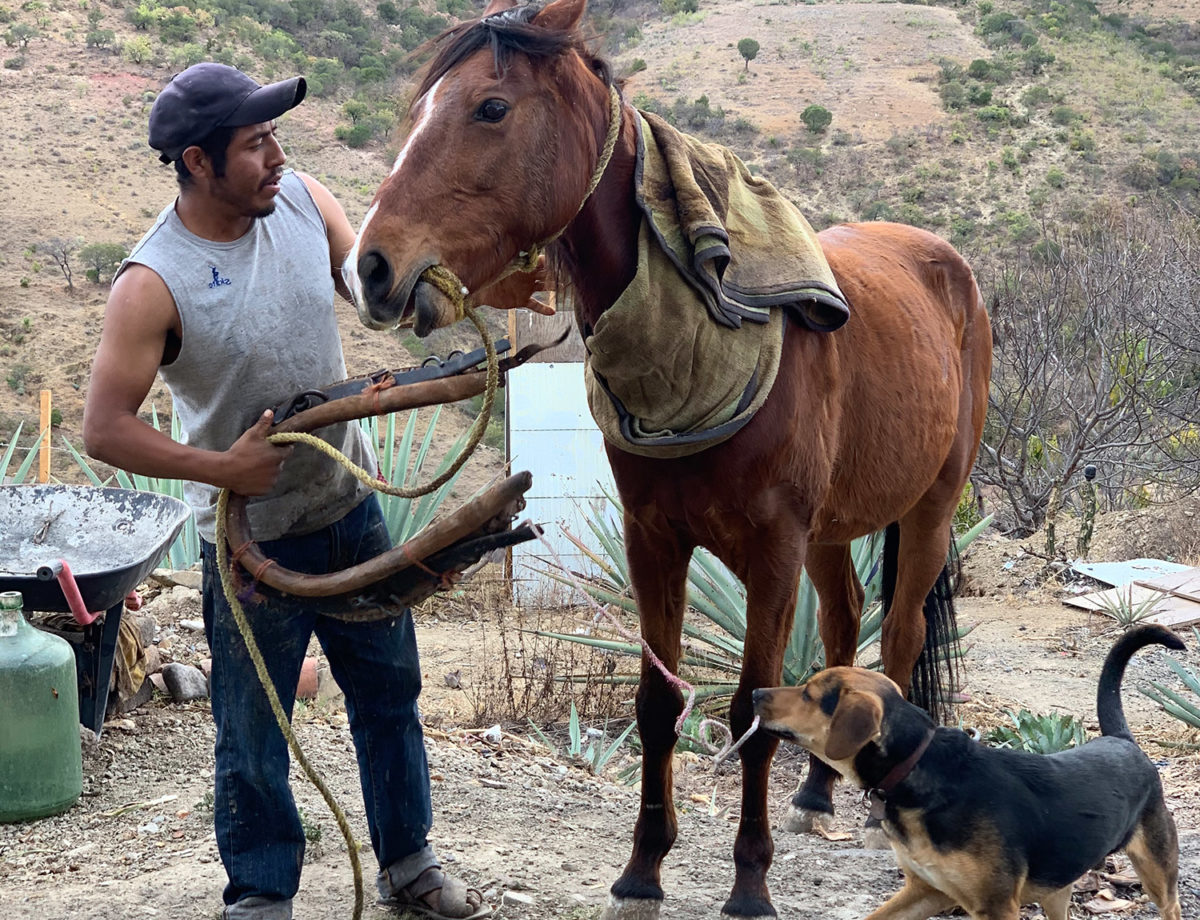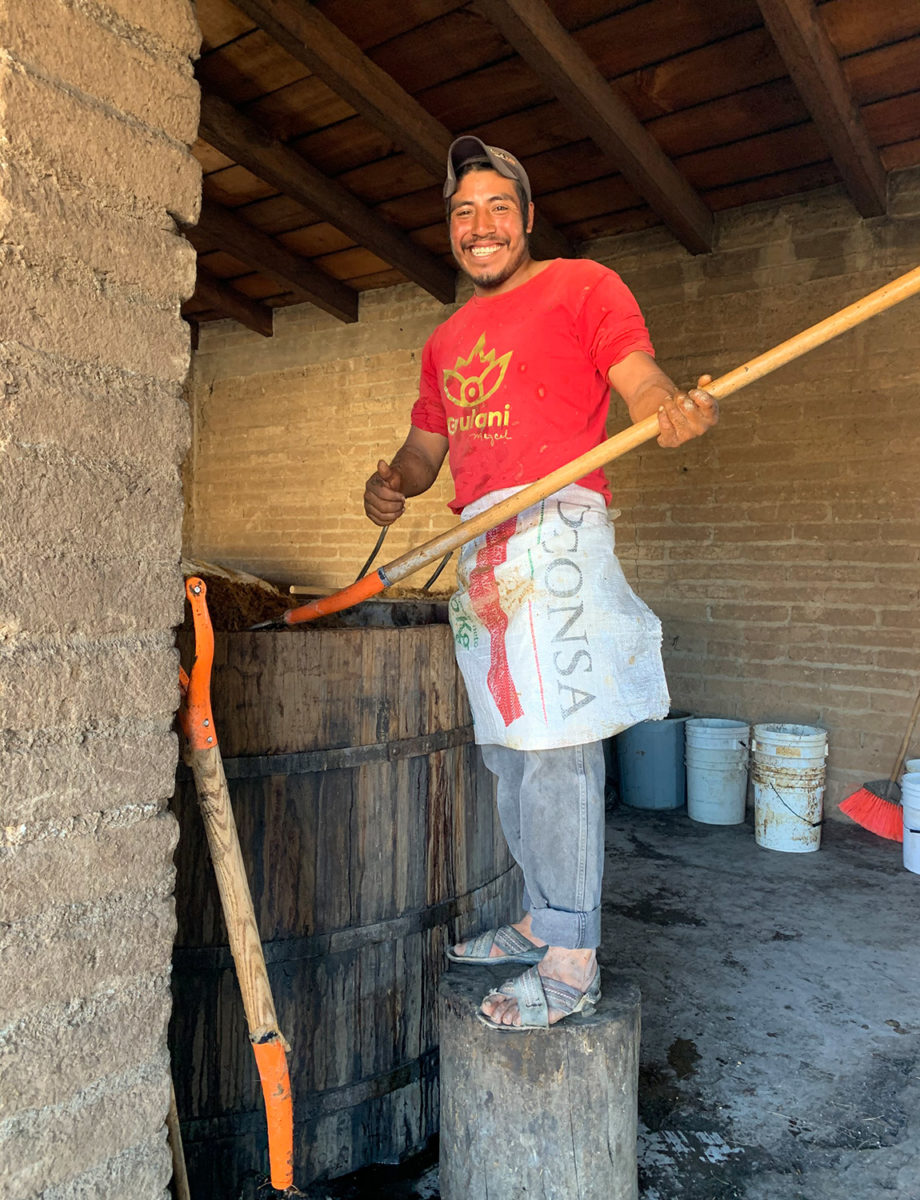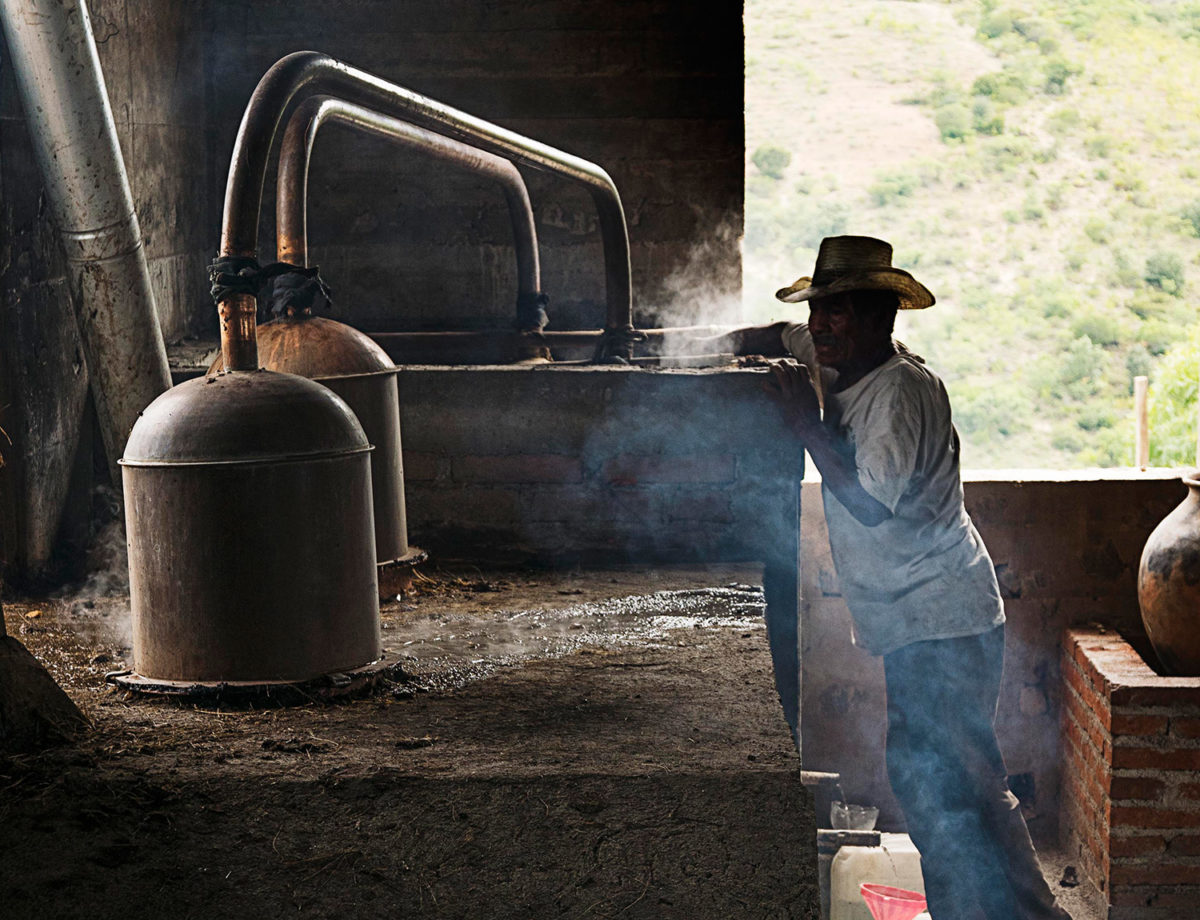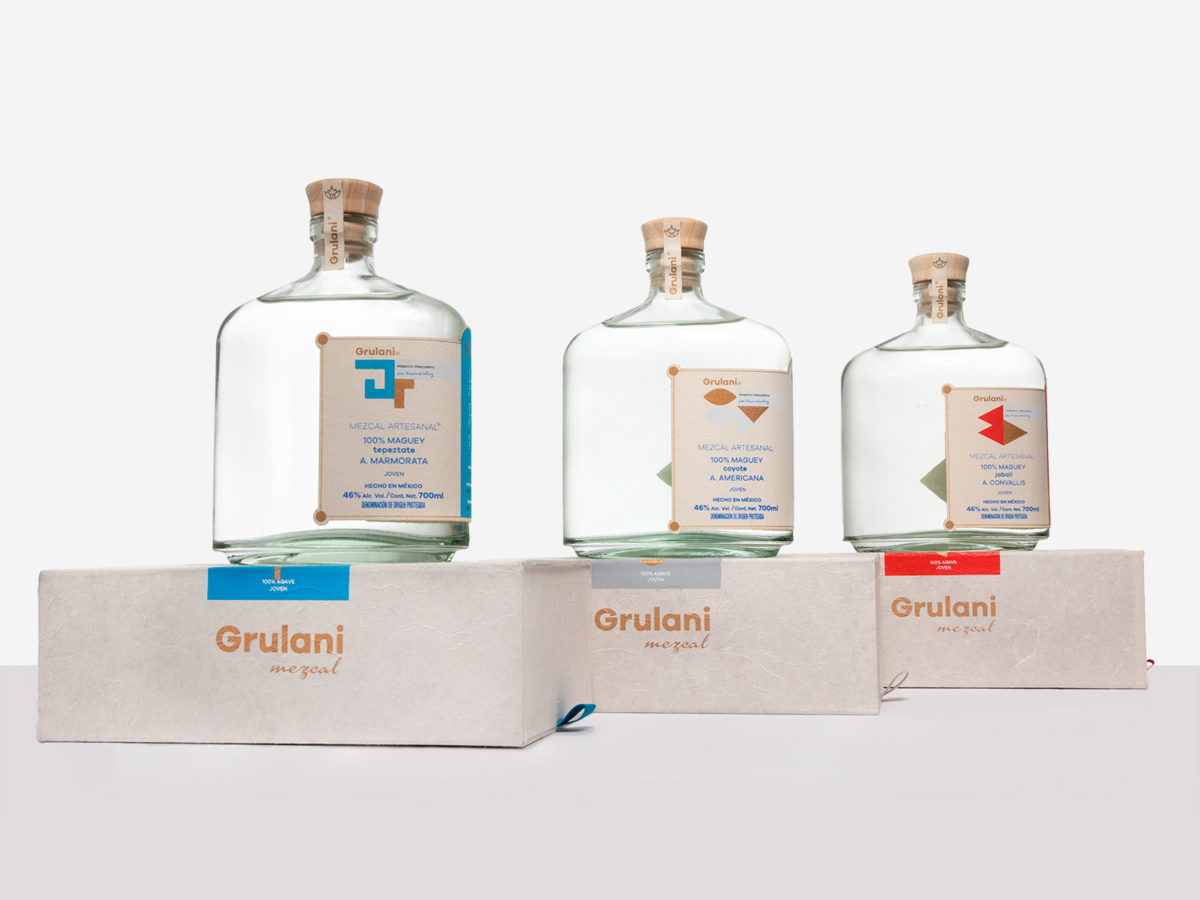As you know, mezcal is obtained from agave, a family of succulent plants which are slow to mature. During the many years it takes to form an agave, the plant takes from the earth the properties that make mezcal so singular and special. All the species of agaves that we distill are endemic to our Oaxacan region and our community, San Baltazar Guelavila. The clay, calcareous, and volcanic lands provide us with an incredible variety of species and therefore flavors in each of our distillates. Each species grows and develops in a different way and the distillation technique is particular to each of our varieties.


The Harvest, or “La Jima”
Our wild agaves are collected by hand directly from their habitat in the region of San Baltazar Guelavila and other communities of San Dionisio Ocotepec. Our master mezcalero, Leo Hernández, knows precisely when an agave is ready to be harvested. He carefully selects the specimens that are ready to produce an outstanding mezcal while always remaining respectful to its cycle of maturation and regeneration. Once the agave is chosen, it proceeds to be harvested, also known as “la jima,” and is when the leaves are cut off to obtain the “piña” of the agave, which is cooked, fermented, and distilled to produce mezcal.
Cooking Underground
We cook the piñas slowly for days in a huge conical stone oven, dug directly into the earth, just as our ancestors did, thus concentrating the liquid from which we will later get mezcal.
The piñas of agave are cooked for five nights and four days in the underground, earthen oven, further developing its flavors and absorbing the characteristic smokiness of artisanal mezcal.




Crushing and Fermentation
As is traditionally done, the cooked piñas are crushed by a horse-pulled stone mill, breaking them down into fibers from which we extract the juice. The liquid and fibers that result from this process are allowed to ferment for days in large, hand-built pine vats, filled with local spring water, letting the natural yeasts do their magic. Depending on the time of year, the agaves are allowed to ferment for between three days (during the dry, hot months), and two weeks (during the rainy season when the temperature drops). With his expert ears, Leo is able to tell the exact moment to stop the fermentation simply by the sound of the bubbles.



The Distillation
When fermentation has finished, it’s time to begin distillation. The byproduct of fermentation is a liquid called tepache, which then passes through the still to separate the volatile from non-volatile substances through a process where a mixture of heat and cold coverts the liquid into steam, and then back into liquid to separate the mezcal that will eventually come from the still. We repeat this process a minimum of two times to obtain the purest product possible that will end up in our bottles, which are filled and labeled by hand in the same location where we produce. For some of our varieties, like Coyote and Jabalí, we distill three times in order to enhance their properties and obtain an more refined and purer product.

Grulani has seven independent varieties distilled under the cultural heritage of the Hernández family, which allows us to proudly state that we are one of the mezcal brands with the largest catalogs.
For The Most Experienced Palates
Grulani keeps a selection of each of its distillations in crystal damajuanas in stable conditions underground, free from light and changes in temperature and humidity, for over a year to present as special editions.


